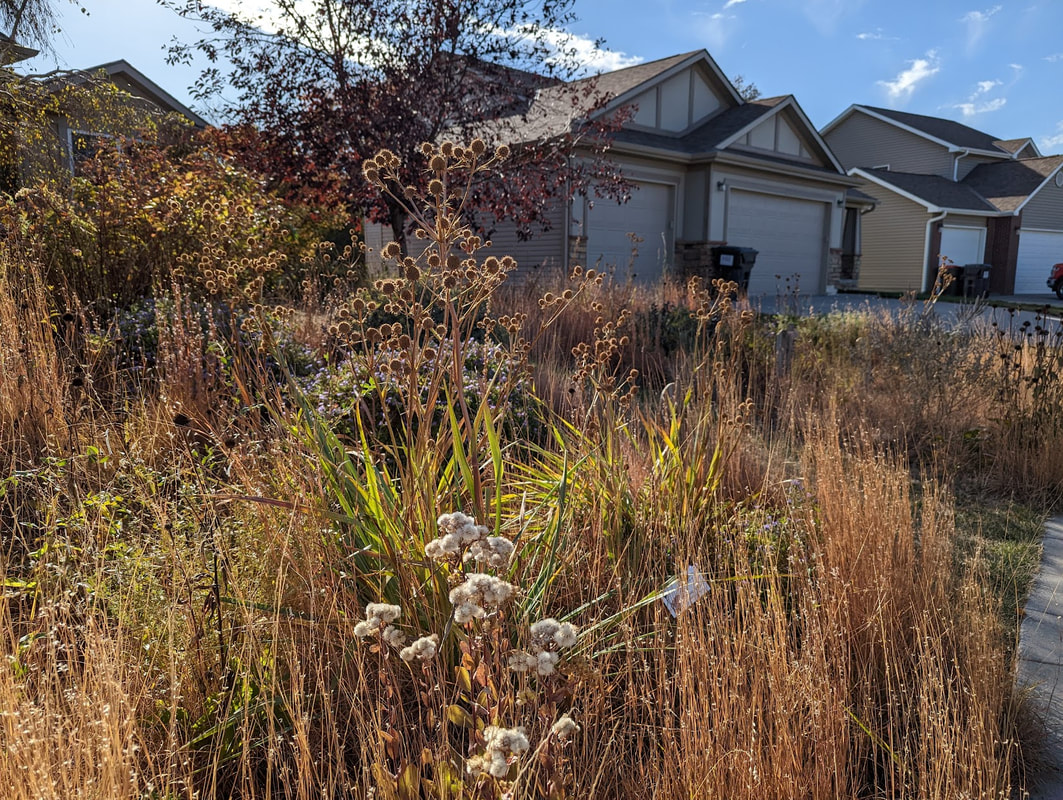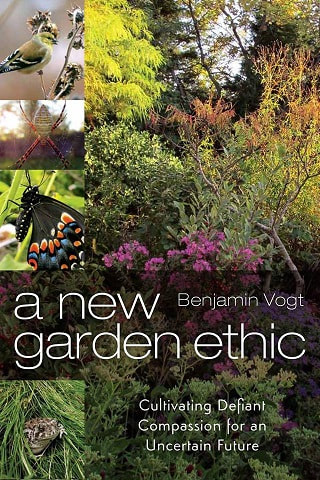So much of it has to do with learning the plants, learning from plants, and embracing the hard truths they teach you. Sure, every garden echoes life lessons, but perhaps the natural garden does so even more.
Lessons in letting go of your control, lessons in stepping back and listening or observing, lessons in trying again, and lessons in giving up the thing you labored over (seeing it not as a place solely or mostly for you, but for other species).
Natural gardens can take longer to establish than a traditional landscape because in the latter the plants are kept in a perpetual state of establishment from the get go via pre-emergent herbicides and annual wood mulch applications. In the latter, plants are spaced far apart like statues or mile markers on the highway, with any self sowing or spread seen as weediness.
A natural garden will never be complete. It is rambunctious and it is determined to find its own way, like a preschooler, changing by the week, the day, even the hour. As gardeners we are forced to learn the true nature of plants, their preferences over ours, and discover the joys of constant and responsive management vs. scheduled and intensive maintenance.
But none of this easy. Not because of physical labor -- perhaps there's just as much in natural design as a cookie-cutter industrialized bed. No, this is not easy precisely because it asks us to cultivate that which we don't fully understand or may never fully understand. Plants don't come with install guides like a new fridge or bike that lead to specific and universal results. It's a leap of faith, setting things in motion and then allowing the plants to be our guide, not the other way around. In the 21st century gardens will achieve greater balance between all species, even as we struggle to navigate and survive climate disruption. I can't think of a better place to cultivate defiant compassion.
The Problem With Plant Lists
[I posted this over at Milk the Weed -- it's important to consider when getting and giving advice via online forums and social media pages. However, please note that when you work with me via an online consult, I can provide everything below as we collaborate on your landscape.]
I cannot provide you with a native plant list to try at home. I cannot do this because I am not familiar with your site conditions, which have a litany of variables including soil type, drainage, sun exposure, nearby plant communities, aesthetic and practical considerations, and of course ecoregion. And cost. Be wary of anyone who provides a native plant list and treats it as a universal prescription (this is rampant on FB). To me, this is unethical.
Now, in my articles and classes I may discuss specific native plants for specific situations, but those are just guiding examples based on my experience in my ecoregion, and in that way can serve as a launching pad for you. But they are not apples to apples. Some species might be, and that's great. In order to set yourself up for the best chance at success you need to do the research yourself. That starts with learning about your ecoregion, studying up on what's native to you (university extensions, guidebooks, even basic lists from Xerces and Pollinator Partnership), researching each plant and how they grow and where (guidebooks, reputable nurseries and botanic gardens and websites -- the more local / regional the better). And yeah, the forthcoming book Prairie Up is loaded with this information and resource tips, but they are also in the online class Starting Your Native Plant Garden.
You gotta do your homework. You really do. Winter is great for this process. And yes, it's worth it on so many levels, least of which is overall empowerment and confidence. No, all of this research is not a magic bullet -- plants are plants, weather is weather, deer are deer, etc. The plants will eventually teach you and show you the way as the landscape evolves and you with it, especially if you design with plant communities vs. plants as lone specimens. Gardens are not cookie recipes. There are no precise measurements that lead to a specific outcome -- not unless you have a full time staff and sizable management budget.
Choose the plants that work for the site and with one another (think habit and sociability aka rate of spread), and you're way ahead of the game. Let plants move about. Let them self organize. Let go of helicopter gardening. This all takes years.
P.S. -- You should probably do most of the above for exotic plants, too.
Seeds $ vs Plugs $$$
This is a good time of year to discuss seeds vs plants, especially since the concern on so many social media forums is showing design purpose.
While seeds are less expensive, it takes years for them (perennials) to develop into a sizable plant. 2-4 years. If you get rain at the right times. Dependent on soil type and ecoregion. It can then take a few more years for the plants to self select and organize into discernible patterns, like sweeps and drifts, that a passerby would interpret as intentional or "pretty."
The design of a seeding is much less controlled for the average gardener. "A sown garden is like a box of chocolates, you never know what you're going to get." If there's any way to get potted plants, even plugs, and curate the species used so they match one another and the site, that might solve some long term management issues. Even simple massing of forb plugs among a grassy matrix can help when it comes to design and layout.
You can also put a thin 1" layer of wood mulch in the planted / plugged bed to show it's a "garden" -- you don't need a border or barrier per se to highlight the space as intentional (although you could trench a border). Remember though, you can't seed into wood mulch. If you're 100% seeding species then diversity is super critical. And on bare soil rates are 50 seeds per foot, if into killed grass 100-150 seeds per foot or more. It's starting to get expensive to the point where you might be thinking why not just buy plugs instead -- especially to get a garden much sooner AND control the design to appease neighbors.



 RSS Feed
RSS Feed

